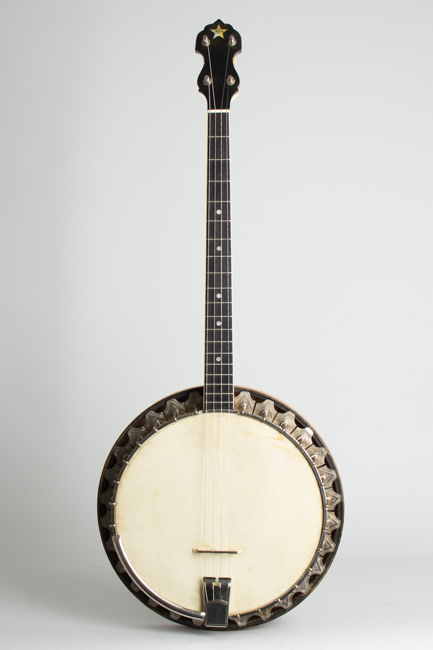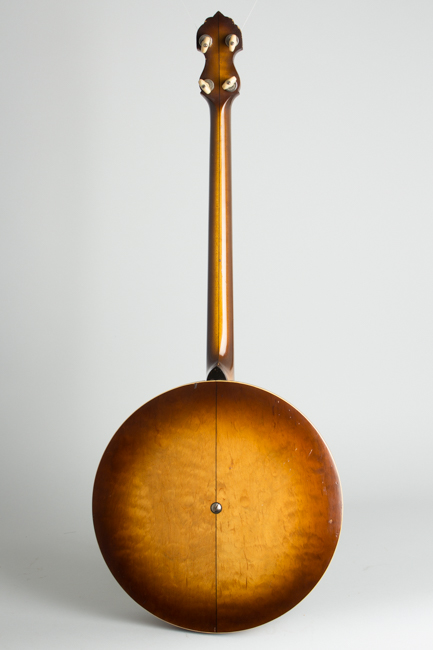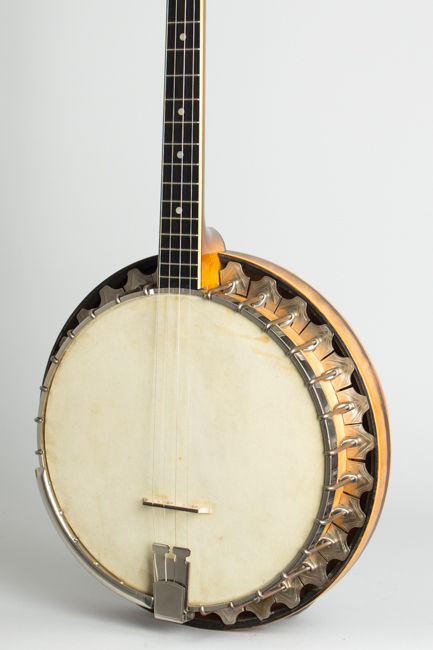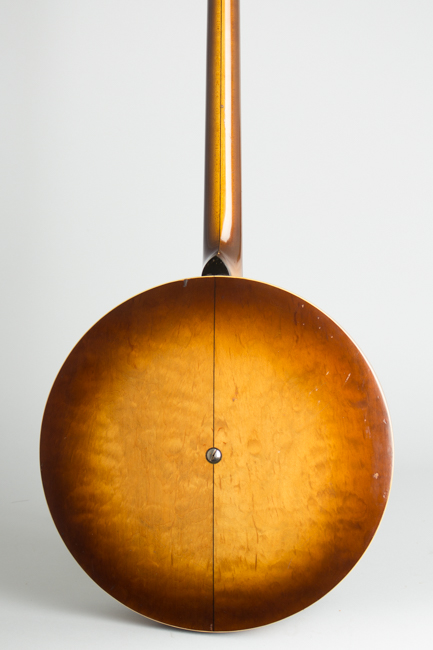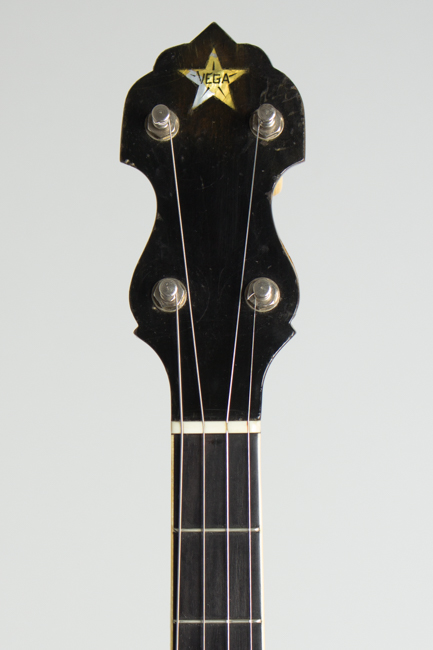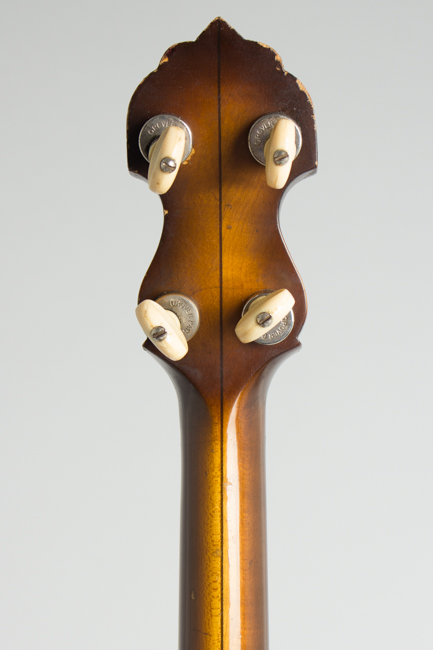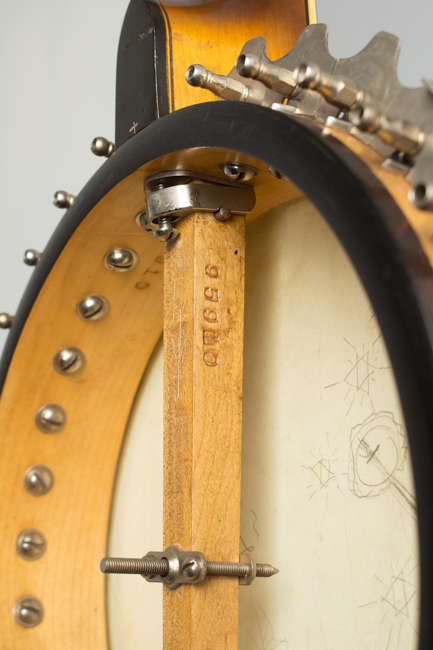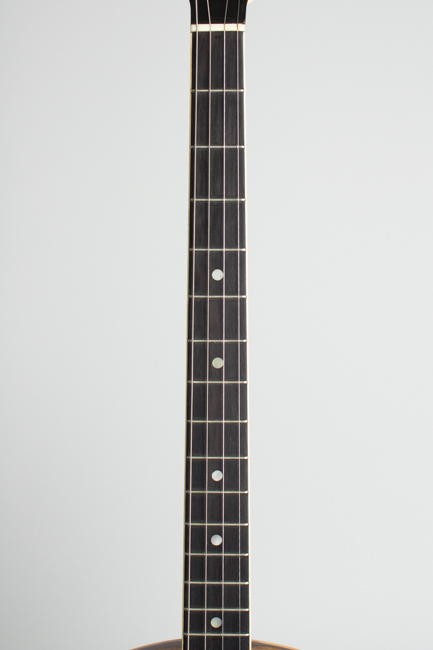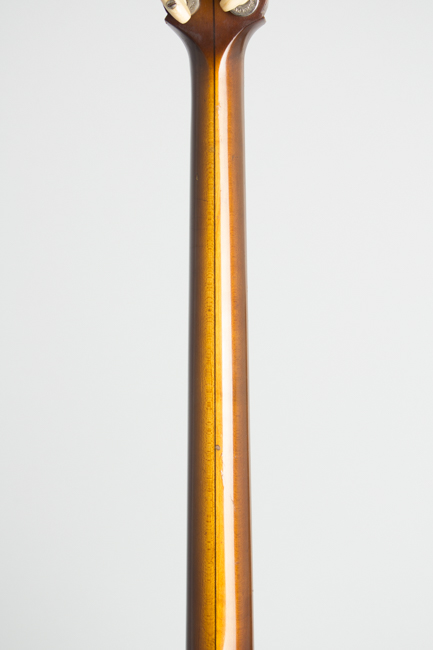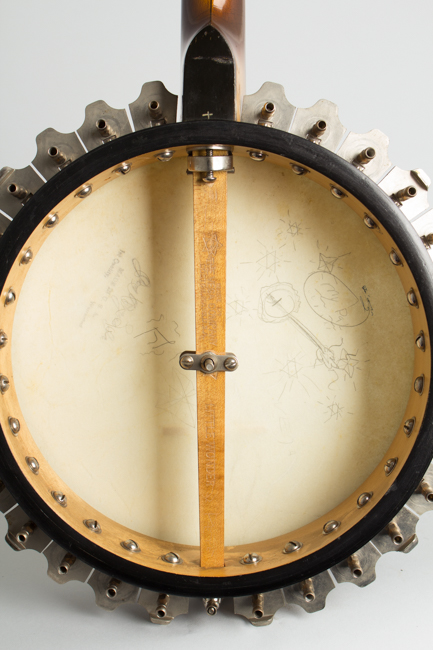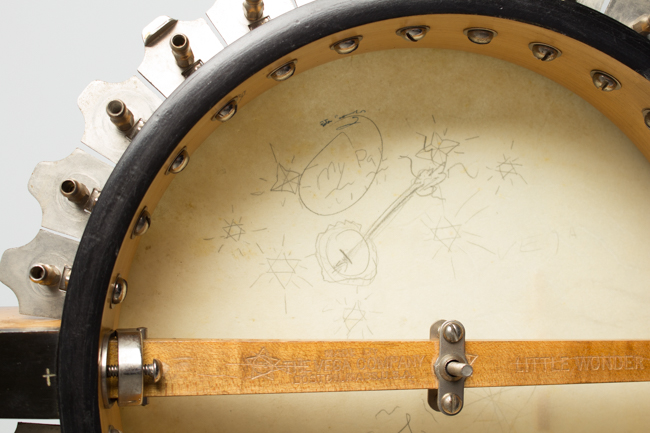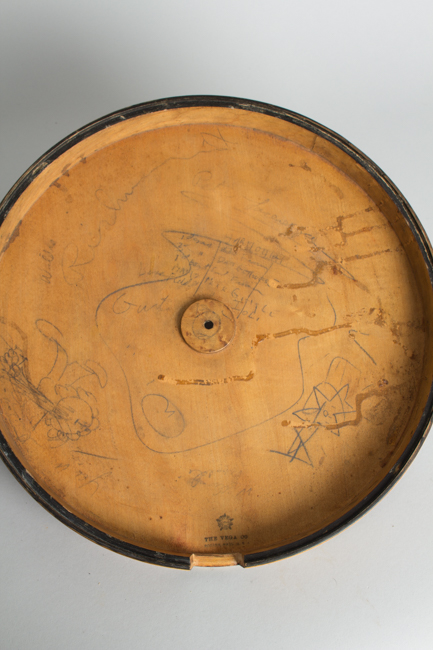Vega Little Wonder Special Tenor Banjo (1931)
This item has been sold.
Item # 8764
Prices subject to change without notice.
Vega Little Wonder Special Model Tenor Banjo (1931), made in Boston, Mass., serial # 95910, shaded maple finish, laminated maple neck, rim and resonator; ebonized fingerboard, original black hard shell case.
The Little Wonder Special was Vega's best budget tenor of the late 1920s, a combination of the Vegaphone style resonator and flange with the simple rim and tone ring construction of their most basic model. Although priced in 1930 at $75 as a good student's value, this model feels and plays like the higher grade Vegas, with a bit less volume and "ring" due to the plain tone ring. The materials are top grade; the neck is maple with an ebonized fingerboard, the rim and resonator laminated maple.
This example is fitted with the fancy engraved multiple flange pieces originally produced for the upscale Vegaphones, but here being used up as that line had by this point been altered to a solid flange design. That gives this banjo a fancier look than many. It has simple geared Grover tuners and the classic "Presto" tailpiece, with the only ornament of note being the engraved pearl Vega star in the headstock. "A beauty in appearance, a wonder for tone and the highest quality for the price" read Vega's catalog description, and in this case they are not really gilding the lily.
Overall length is 33 1/4 in. (84.5 cm.), 11 in. (27.9 cm.) diameter head, and 3 in. (7.6 cm.) in depth, measured at side of rim. Scale length is 23 in. (584 mm.). Width of nut is 1 3/16 in. (30 mm.).
This banjo shows some wear overall, but remains nicely original and still an excellent value in a period tenor banjo. Over most of the banjo the original finish is intact with light checking and some dings and dents. There are a couple of repaired cracks to the upper resonator wall on the bass side, and unfortunately someone sanded the finish off the upper half of the entire resonator side as part of the repair. This does not affect function at all, but is noticeable.
Apart from this area, the banjo remains quite attractive with all of the original hardware and the plating showing only minor wear. The original frets have some light wear but not enough to affect playability. The banjo is set up with an old, likely original skin head; on the underside of this and inside the back of the resonator are some period pencil graffiti doodles of the sort you would expect a 12-year-old to leave behind. That person called this banjo "my pal"; we hope someone nearly 100 years later will feel the same. Excellent - Condition.
The Little Wonder Special was Vega's best budget tenor of the late 1920s, a combination of the Vegaphone style resonator and flange with the simple rim and tone ring construction of their most basic model. Although priced in 1930 at $75 as a good student's value, this model feels and plays like the higher grade Vegas, with a bit less volume and "ring" due to the plain tone ring. The materials are top grade; the neck is maple with an ebonized fingerboard, the rim and resonator laminated maple.
This example is fitted with the fancy engraved multiple flange pieces originally produced for the upscale Vegaphones, but here being used up as that line had by this point been altered to a solid flange design. That gives this banjo a fancier look than many. It has simple geared Grover tuners and the classic "Presto" tailpiece, with the only ornament of note being the engraved pearl Vega star in the headstock. "A beauty in appearance, a wonder for tone and the highest quality for the price" read Vega's catalog description, and in this case they are not really gilding the lily.
Overall length is 33 1/4 in. (84.5 cm.), 11 in. (27.9 cm.) diameter head, and 3 in. (7.6 cm.) in depth, measured at side of rim. Scale length is 23 in. (584 mm.). Width of nut is 1 3/16 in. (30 mm.).
This banjo shows some wear overall, but remains nicely original and still an excellent value in a period tenor banjo. Over most of the banjo the original finish is intact with light checking and some dings and dents. There are a couple of repaired cracks to the upper resonator wall on the bass side, and unfortunately someone sanded the finish off the upper half of the entire resonator side as part of the repair. This does not affect function at all, but is noticeable.
Apart from this area, the banjo remains quite attractive with all of the original hardware and the plating showing only minor wear. The original frets have some light wear but not enough to affect playability. The banjo is set up with an old, likely original skin head; on the underside of this and inside the back of the resonator are some period pencil graffiti doodles of the sort you would expect a 12-year-old to leave behind. That person called this banjo "my pal"; we hope someone nearly 100 years later will feel the same. Excellent - Condition.
